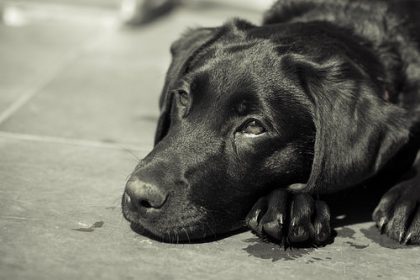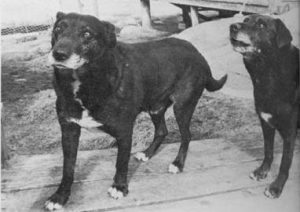
The popularity of genealogy is evidenced by the growth of services and sites like ancestry.com, because, in part, knowing who we were tells us more about who we are. It can explain a lot, and the same hold true for our breeds.

These elderly males were the last two St. John’s Dogs found in Newfoundland in the late 70’s. When they died, the breed became extinct #PreserveOurDogBreeds
Sadly, we’ll probably never know the earliest origins of many of our breeds, their history lost in the mist of time. With other breeds, we speculate.
Not so with the Labrador Retriever. The terrific breed can be traced to the St. Johns Dog found on the island of Newfoundland in what is now part of the province of Newfoundland and Labrador in Canada. Though now extinct (#PreserveOurDogBreeds), the St. Johns Dog likely developed with the fishing industry in the 16th century, its earliest ancestors a random-bred mix of English, Irish, and Portuguese working breeds. What resulted was a smaller short-coated dog (sometimes called the Lesser Newfoundland) used to retrieve and pull nets in from the water.
Fishermen often traded their St. Johns Dogs, and only English aristocrats could afford what was being asked. This is how these dogs found their way to the dukes of Buccleuch and Malmesbury where they were the foundation for today’s Labrador Retriever. These St. Johns Dogs often had a white chest, feet, chin, and muzzle, known as tuxedo markings, and occasionally, a modern day Lab will have white hairs on their feet or muzzle, or a small white spot on his or her chest known as a medallion (the AKC breed standard indicates that a small white spot on the chest is permissible, but not desirable).
You may have inherited the family nose, and some Labs inherited that spot.
Photo credit: by.becart Leya via photopin (license)
